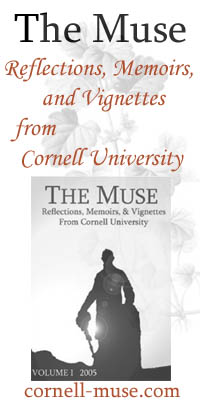That's a question that President Skorton was asked at an address to faculty staff last week. And we're not talking about the East Hill News bubble: Skorton is right that Cornell has a diversified revenue stream -- tuition comprises 25 percent of the University's funding and investments comprising another 11 percent. Compare this to a place like Williams College where investments make-up over a third of revenues, with tuition making up the bulk of the remainder. That's why Cornell has been able to strengthen it's financial aid policies in the last year, while Williams has had to go back to requiring financial aid packages to include loans. He's also right that the cost increases in college education are unsustainable. Skorton must have a different definition of 'bubble' to me, because when prices become unsustainable, they generally come down. That's what a bubble is, right? And that's why the University had to cut $71MM this year and future cuts are certain. So Skorton knows that higher education is in a bubble, but is also trying to console his staff and keep morale high. But as MetaEzra readers know, there are really two different bubble in higher education: the institutional debt bubble (which institutions have been using to hide their pain) and the student loan bubble (which families have been using to hide their pain).Is higher education in a "bubble," that is, overvalued and headed for a crash? While the cost of higher education is unsustainable, Cornell is not at risk for a financial crisis because it gets its income from a wider range of sources than most universities, he said.
 | ||

